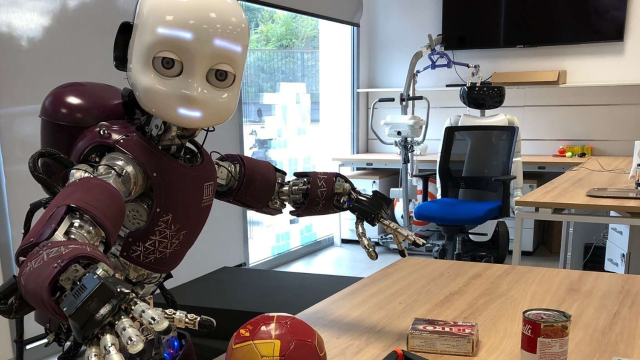Intel is powering neuromorphic robots, AKA, robots that learn about objects after they’re deployed, in what is a pretty interesting development in the space of artificial intelligence.
So, let’s just quickly define what Intel is calling neuromorphic computing and robotics: the robot, with neuromorphic capabilities, will be able to generate “miscrosaccades” (small, jerking eye movements) after watching an object with its eyes (camera or dynamic vision sensor).
These events are collected and fed through Intel’s Loihi chip and are added to a spiking neural network, which acts sort of like a brain with data and information collected. If the object or view hasn’t been recorded in the neural network before, then the representation of the event is updated or added as a new entry. If it is known, it’s recognised and feedback is given to the user.
It’s not a new concept, nor is it a new practice, but Intel’s Loihi chip is able to power memory retention and addition with 175 times lower energy than conventional methods running on a CPU. Working with the Italian Institute of Technology and the Technical University of Munich, this was achieved by implementing a spiking neural network architecture on the Loihi chip.
After witnessing an event (object), the Loihi then localises the learning process to a “single layer of plastic synapses”, with new neurons being recruited as different object views were being achieved. This lets the robot learn while also being able to interact with the user.
Ergo, robots can create memories more energy efficiently now. Heck yeah, our future robotic overlords are energy conscious.
“When a human learns a new object, they take a look, turn it around, ask what it is, and then they’re able to recognise it again in all kinds of settings and conditions instantaneously,” said Yulia Sandamirskaya, the robotics research lead in Intel’s neuromorphic computing lab.
“Our goal is to apply similar capabilities to future robots that work in interactive settings, enabling them to adapt to the unforeseen and work more naturally alongside humans. Our results with Loihi reinforce the value of neuromorphic computing for the future of robotics.”
This research, according to Intel, is crucial in improving what manufacturing or assistive robots could do in the future. Robots being able to learn on the job sounds terrific, frankly.
Though keep in mind that this research, so far, has been limited to visual events. Though visuals are important, consider all the stuff the robot wouldn’t be able to learn from, including sounds and sensations (although the chip can smell), along with critical thought in complex scenarios.
Still, this is a very impressive development.
You can read the paper “Interactive continual learning for robots: a neuromorphic approach” online. It was named “best paper” at the International Conference on Neuromorphic Systems (ICONS). You can read the announcement on the Intel website.
